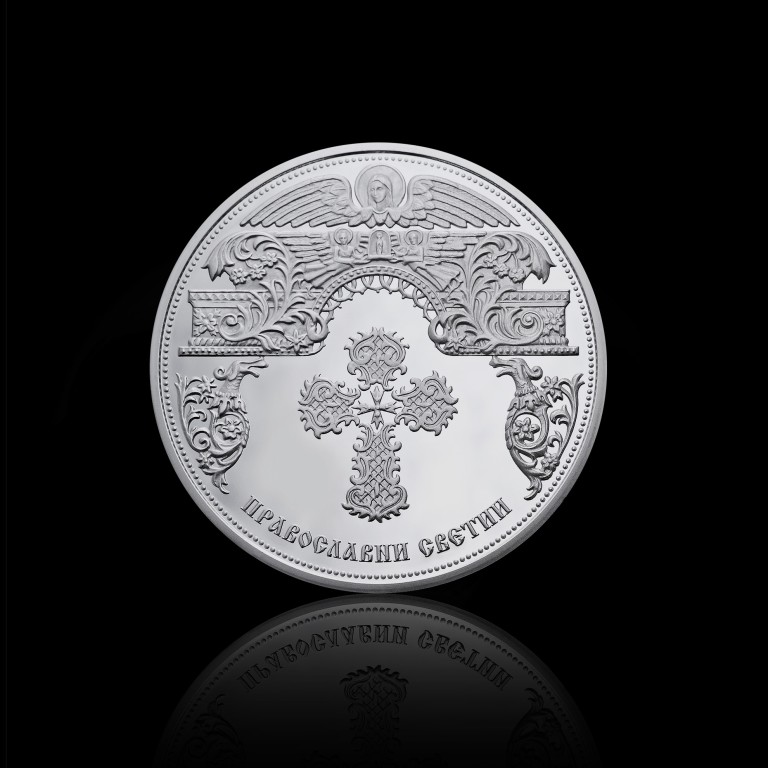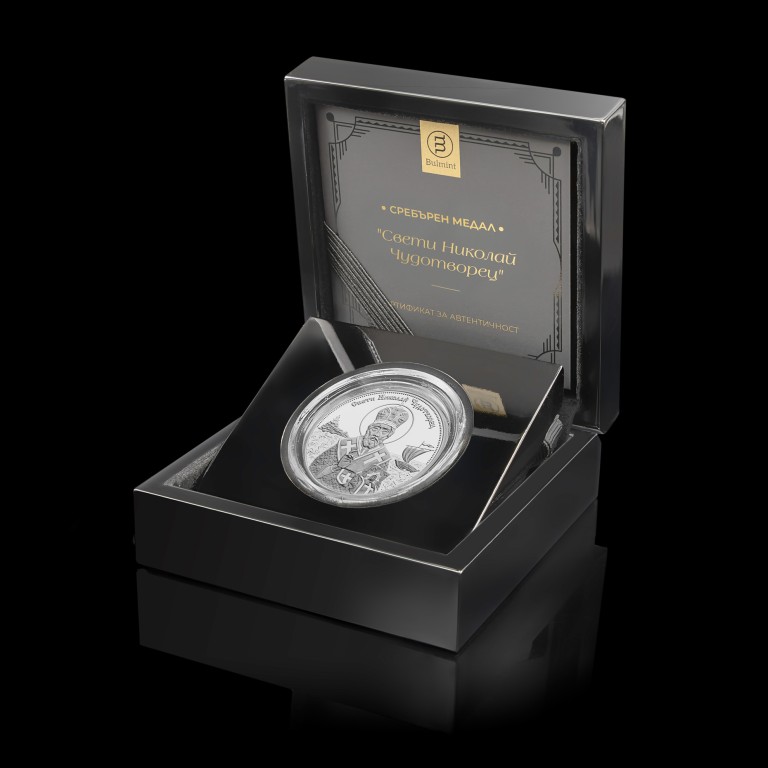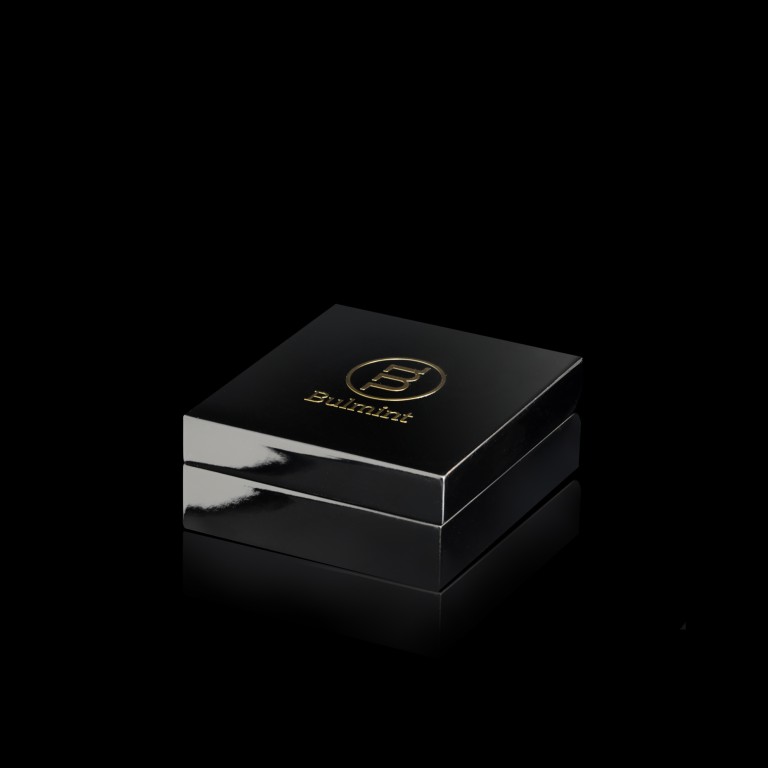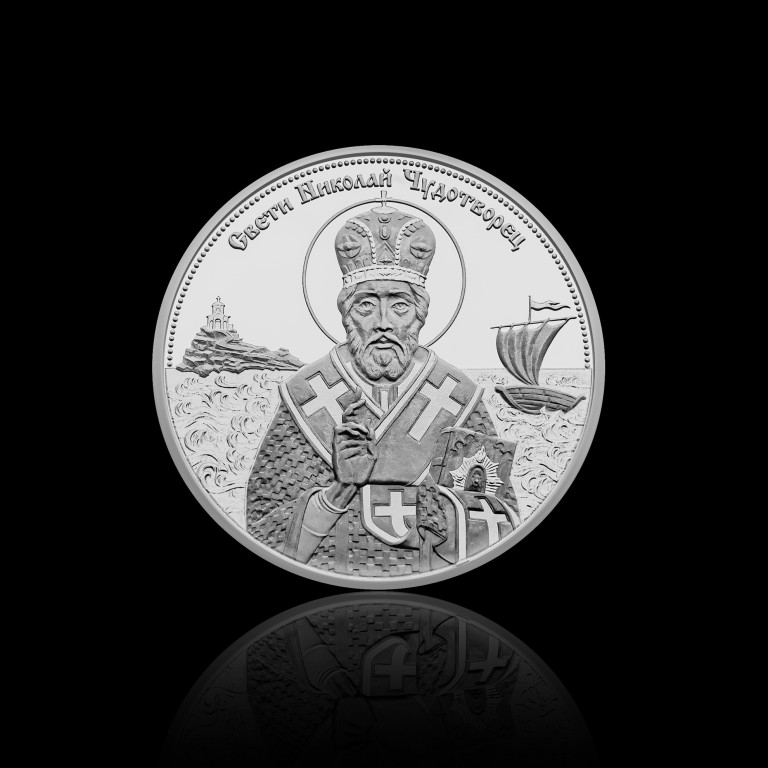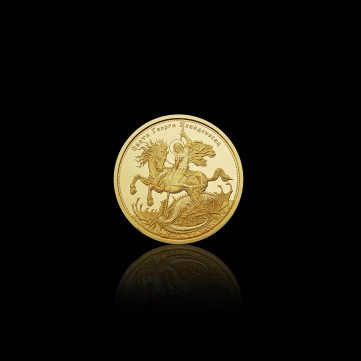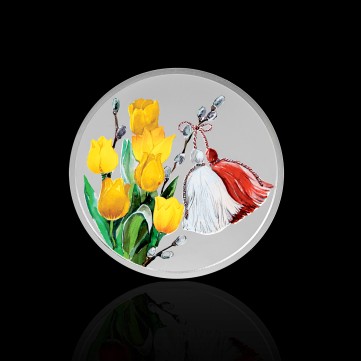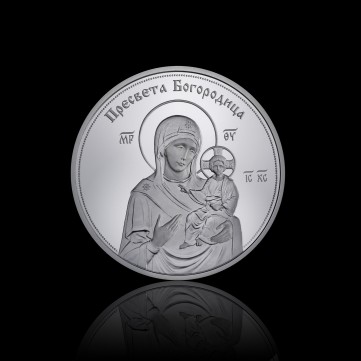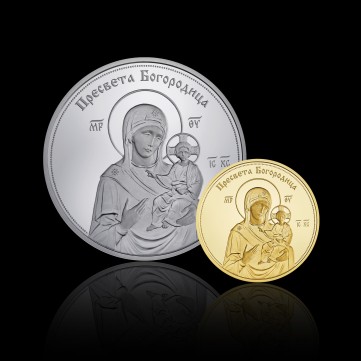Saint Nicholas the Wonderworker Silver Medal, 31.1 g
260.00 BGN / 132,94 €The Othodox church’s most highly revered saint after the Mother of God is the newest addition to the Orthodox Saints program. A stunning gift for Saint Nicholas’s Day or a symbol of personal faith, this medal struck from 31.1 grams of 999.9 fine silver honours Saint Nicholas the Wonderworker.
In honour of Saint Nicholas’ Day we proudly present the next collection in the Orthodox Saints Program – Saint Nicholas the Wonderworker.
The image of one of the most revered holy persons in Eastern Orthodoxy is recreated in proof quality out of 31.1 grams of 999.9 fine silver in a diameter of 38.6 mm. Different elements of the composition stand out from one another through the masterful use of different matt textures, the most enchanting of which is the satin finish that highlights some of the ornaments on the saint’s ceremonial garb. The reflective surface of the sea is represented through the use of laser polishing.
The most widespread iconographic depiction of Saint Nicholas meets one of the most famous stories from his life on the obverse of this art medal. In the foreground stands a portrait of the saint dressed in full Orthodox archbishop’s regalia – one of the highest ranks in the church’s hierarchy, which he bore in life. Saint Nicholas himself was born in the 3 rd century – long before the Great Schism that split Christianity into Eastern Orthodoxy and Roman Catholicism – but his iconographic depictions often reflect the local denomination. The stunning mitre in particular stands out – a ceremonial crown typical of the Orthodox church. He is also decorated with a great omophorion – a symbol of bishopdom, similar to a wide band of fabric. In one hand he is holding a Gospel book, while the other one is raised in a gesture of blessing. This medal also stands out with the dynamic background scenery – a stormy sea with a small ship in the distance that references his role as patron of sailors and merchants. On the left side of the composition there is a small island, a church perched on its jutting rocks – a symbol of his status in the Christian clergy.
The reverse motif is shared between all medals in the Orthodox Saints program. It recreates the highly ornamented iconostasis of the Nativity of the Blessed Virgin Mary Church in Rila Monastery - made by Atanas Teladur, founder of the woodcarving movement of the Samokov Art School. At its centre is an Eastern Orthodox cross faithful to the iconostasis’ style.
The product comes in a luxury wooden box adorned with a gold-coloured metallic logo. It is placed on a special raisable platform that allows this stunning work of medallic art to be displayed.
You can buy a medal bearing the same motif, made from 7.78 grams of pure gold. The full Saint Nicholas the Wonderworker collection is also available in a luxury double box.
Metal
Fine Silver
Weight
31.1
g
Purity
999.9/1000
Edging
Smooth
Quality
Proof
Circulation
3000
pcs.
Diameter
38.6
mm
About Saint Nicholas the Wonderworker
Tradition holds that Saint Nicholas the Wonderworker was born in the 3 rd century to a wealthy family in the city of Patara in Lycia, Asia Minor. In his adolescence, he was ordained as a presbyter.
After the death of his parents, he used his inheritance to help those in need and to this very day he is remembered for his generosity. One of the most famous stories about his life speaks of how he saved the daughters of a desperate citizen of Patara from a terrible fate. Having fallen on hard times, the formerly rich man had decided to sell his daughters into prostitution. However, Saint Nicholas learned of his predicament and one night he secretly threw a purse full of gold through the man’s window. The father used the money as a dowry for his eldest daughter and managed to find her a husband. Not long after, Saint Nicholas threw another purse full of gold into the man’s home – for his second daughter. When he returned with gold for the youngest daughter, the father, hidden in wait, finally saw who his mysterious benefactor who had done him such good was, and managed to give the saint his sincere gratitude.
This legend is the reason Saint Nicholas is considered a patron children and the poor, as well as the reason he is one of the precursors to Santa Claus.
The holy man later became archbishop of Myra. According to legend, he himself did not know why he was headed towards that city all he knew is that he was doing God’s will.
Warned through a miraculous vision, the bishops of Myra were already expecting a man chosen by God to succeed the recently departed Archbishop John. When Saint Nicholas entered their temple, he instantly knew that this was the Lord’s chosen leader of the Lycian Church.
The saint continued preaching God’s Word during the persecution of Christians under Diocletian. He was imprisoned for his faith, but survived until the legalisation of Christianity under Constantine the Great, after which he resumed his role as archbishop. According to later sources he took part in the First Council of Nicaea in 325, when the first eight portions of the Nicene Creed.
After his death, Saint Nicholas is buried in Myra, but later his holy remains are moved to the Italian city of Bari.
Feasts and veneration
Saint Nicholas the Wonderworker is exceptionally highly revered among Orthodox Christians. He is one of the very few saints to whom a day of the week is dedicated - every Thursday the Orthodox Faith celebrates his memory with a special service. Only Saint John is allotted a service every Tuesday, and Saturday is dedicated to the Virgin Mary and all other saints.
There are two Feast Days throughout the year dedicated to Saint Nicholas – on December 6 the Bulgarian Orthodox church marks the date of his death, and on May 22 (May 9, according to the Julian calendar) we celebrate the Translation of his relics from Myra to Bari.
The exact date of Saint Nicholas’s Day and the traditions associated with it vary from country to country, influenced by the local culture and folklore. In Bulgaria it is celebrated on December 6, the traditional meal for this feast being fish or a type of fishfilled pastry called a ribnik. There is no singular concrete answer to the question “Why is Saint Nicholas associated with fish?”, but we can gain some amount of insight from the legends about him. According to a crucial story from Saint Nicholas’s life, on his way to the Empty Tomb, Jesus’ purported gravesite, he calmed a terrifying sea storm with the force of his prayer alone and resurrected a sailor who had fallen from the mast to his death. Other legends tell the story of how he fixed a hole at the bottom of a fisherman’s boat by stuffing a carp in it in order to save him. These tales are the basis of the tradition of eating carp on Saint Nicholas’s Day. The origin of the feast day tradition may stem from the fact that the fish was one of the most widespread symbols of Early Christianity.
Folk tales about Saint Nicholas are also quite interesting – Bulgarian legend that bear no connection to religious texts about the holy man. A common motif is his escape towards the sea that caused the water to recede, creating a path for him to step on. Legends in different regions state that this is how various landmarks along the Black Sea coast formed – including Kaliakra Cape and the land near Emona Village, home to a monastery dedicated to Saint Nicholas.
We dedicated this program to the saints thousands of Christians turn to with prayers of good health and protection, aid and spiritual guidance. It will consist of 12 medal collections dedicated to 12 holy men and women central to Eastern Orthodox Christianity. Each motif will be struck to proof matt-gloss quality onto two medals made of the finest gold and silver.
The number 12 itself is steeped in symbolic meaning - it bears significance in every corner of the world and in more than one religion or culture. That is how many months there are in a year according to most calendars. Its significance is especially pronounced in the Christian Bible. There are twelve holy apostles in the New Testament - chosen confidants and students of Jesus Christ, who were the ones to spread his gospel. The days between the Nativity of Christ and Epiphany are also twelve. Eastern Orthodox Christianity observes twelve Great Feasts - each dedicated to a pivotal moment in the life of Jesus Christ or the Virgin Mary, second in significance only to Easter.
The reverse design shared by the medals in this collection draws inspiration from the gilded iconostasis from the Nativity of the Blessed Virgin Mary Church in Rila Monastery - a composition of richly ornamented woodcarvings depicting floral ornaments, stylised animals and angels. This iconostasis was made between 1839 and 1844 by the master woodcarver Atanas Teladur, founder of the woodcarving movement of the Samokov Art School.
The iconostasis holds a place of high importance in interior church architecture - it represents the divide between Heaven and Earth. It acts as a partition between the altar, to which only members of the clergy have access, and the congregation. It is also the frame upon which the majority of the church icons are hung. The Orthodox churches of Bulgaria, particularly the ones from the National Revival Period, are known for their intricate handcarved wooden iconstases, each steeped in Christian symbolism and local folk motifs.
We ship our orders with Econt Express. The cost of delivery is at the customer's expense and includes insurance, cash on the delivery fee, if applicable, and courier service. The total delivery cost is formed based on the chosen method of payment and the method of delivery.
Orders received by 3 p.m. on working days and chosen payment method cash on delivery or credit card are processed and shipped on the same day. Orders received after 3 p.m. or during the weekend, are processed and dispatched on the next working day.
Each shipment has the "Check" option. In case the customer decides to return the order, the delivery and return costs are at the expense of the customer.

